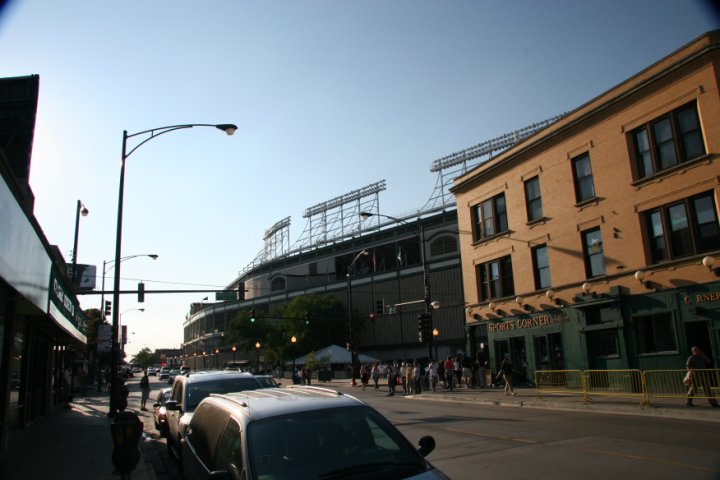
|
01_wrigley_approach (1/27)
Prospect of Wrigley Field, Addison approach, looking west. Angel Stadium, Dodger Stadium, and Petco Park -- the three major league ballparks I'd been to previously -- all pretty much exist as standalone attractions, though it can be argued that San Diego has made strong efforts to make the Gaslamp District into a place people would want to stick around in after the games. People marvel at the popularity of the Cubs -- or maybe the belovedness of the Cubs -- regardless of the team's fortunes, which more often than not, are the stuff of legendary heartbreak. 1969? 1998, when the Cubs faced teammate Greg Maddux to lose in three straight in the NLDS? 2003 and Steve Bartman? Sure, all that and more.
All the more reason why I find myself looking off the field to figure out why the team remains popular. Is it the Lincoln Park Trixies who keep the team afloat? I couldn't rightly say, but I did see my share of comely blonde lasses of a certain age. Nonetheless, they certainly didn't make up the majority of the bodies in the stands.
But no, suchlike sounds more like the hyperventilation of BTF regulars who (a) don't know any actual Trixies, and (b) wish they did. Pressing on, I suggest at least part of the attraction is Wrigleyville itself. Loaded with bars and souvenir shops, it invites the fan to loaf before and after the game. It has excellent people watching. It is walkable.
It is also nearly impervious to the automobile, both a curse and a blessing. On the one hand, parking, for those commuting from Schaumberg or one of the other suburbs, is nearly impossible to find and/or expensive ($20 seemed to be the common fare). Getting out of the games, for motorists, is difficult. Yet unburned 89 octane does not unduly perfume the Wrigley air after a game, a decided change of affairs for Southern Californians used to waiting out the hours' worth of traffic.